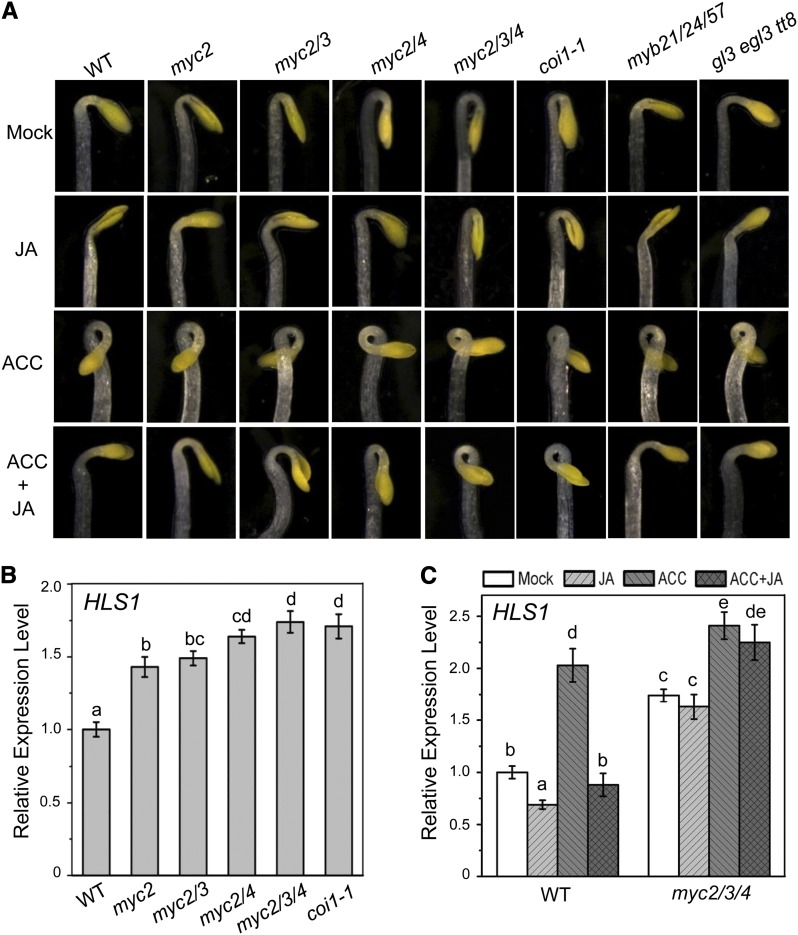Figure 3.
MYC2, MYC3, and MYC4 Function Redundantly to Mediate the JA-Inhibited Apical Hook Formation.
(A) The hook phenotypes of 4-d-old etiolated Arabidopsis seedlings Col-0 (WT), myc2-2 (myc2), myc2-2 myc3 (myc2/3), myc2-2 myc4 (myc2/4), myc2-2 myc3 myc4 (myc2/3/4), myb21 myb24 myb57 (myb21/24/57), and gl3 egl3 tt8 grown in the dark on MS medium supplied without (Mock) or with 5 μM MeJA (JA), 10 μM ACC, or 10 μM ACC plus 5 μM MeJA (ACC+JA).
(B) Real-time PCR analysis for HLS1 in the indicated 4-d-old etiolated seedlings. Actin8 was used as the internal control. Data are means (±sd) of three biological replicates. Lowercase letters indicate significant differences by one-way ANOVA analysis with SAS software (P < 0.05).
(C) Real-time PCR analysis for HLS1 in the 4-d-old etiolated Col-0 (WT) and myc2-2 myc3 myc4 (myc2/3/4) treated with mock, 100 μM MeJA (JA), 100 μM ACC, or 100 μM ACC plus 100 μM MeJA (ACC+JA) for 6 h. Actin8 was used as the internal control. Data are means (±sd) of three biological replicates. Lowercase letters indicate significant differences by one-way ANOVA analysis with SAS software (P < 0.05).

